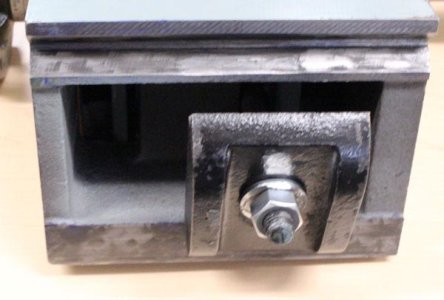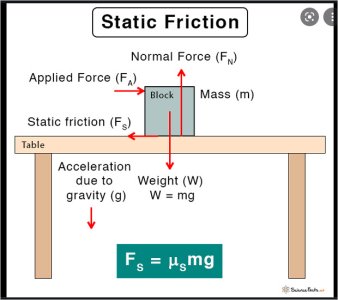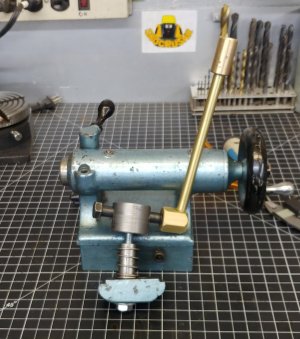I'll take a better picture when the tee block is out. It's a cast iron part & has kind of a relief profile molded in the lower surface for the nut to hide up into. So the net thickness is probably 1/2". Its goofy, almost like it was intended for a smaller lathe.
Providing more clamping area between the tee plate to the way undersides would increase friction holding force for the same lever cam force, which I think is fine. Just spit balling numbers, the current contact area is maybe 3" x 0.25" x 2 = 1.5 in2 vs a larger plate say 6" x 0.75 x 2 = 9 in2 (6x more area). I seem to recall the underside bed rail surfaces may not be ground & the existing plate is rough milled, so also contributes to reduced friction. Its only under heavy drilling that the TS wants to slide backwards. I guess if I was ambitious I could find something like brake liner material in strip form & bond it to the T-plate groove, but it's probably overkill.
I don't think your net thickness is a valid way of looking at it. The compressive strength of the plate at the nut is prolly WAAAYYY more than enough. Not likely much different than the bolt itself. I'm not saying I am convinced of any thing here, but I would say that bending of the plate is prolly a much bigger deal than the net thickness at the bolt is.
The plate is like a bridge. Both ends of the bridge are anchored on the bottom of the ways. And a huge giant truck is hanging from a cable under the bridge. The middle of the bridge is bending from that weight. The cable size (bolt) doesn't matter much. It's plenty big enough that the truck isn't gunna fall. But the bridge might collapse.....
I know, it's a stupid analogy, but I bet you know what I mean now.







